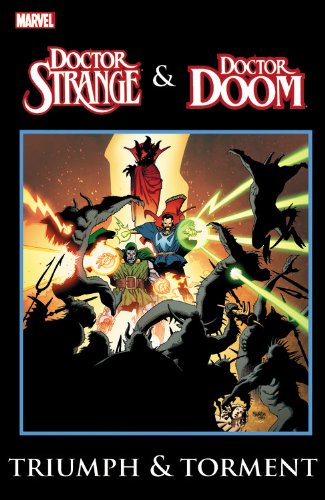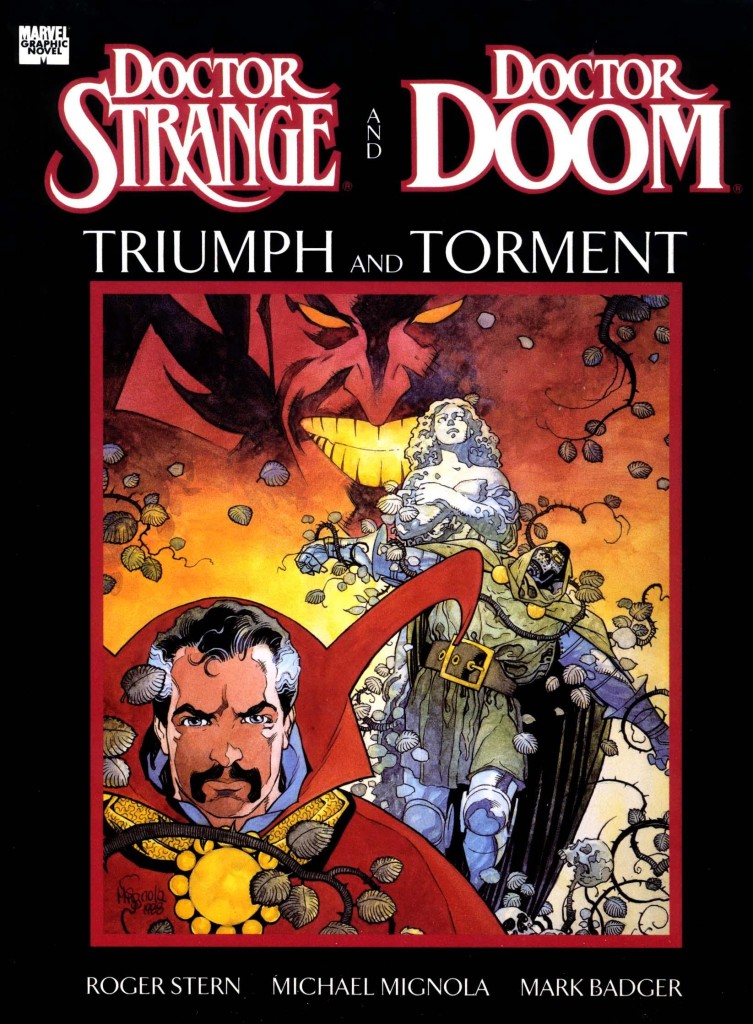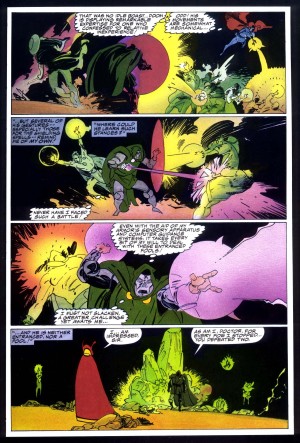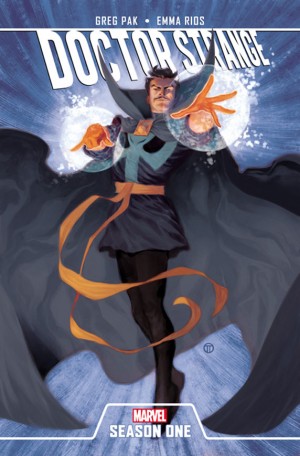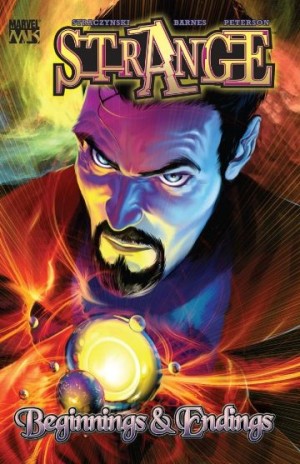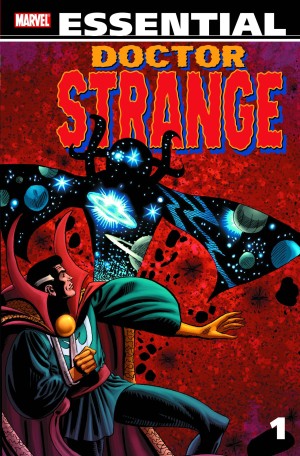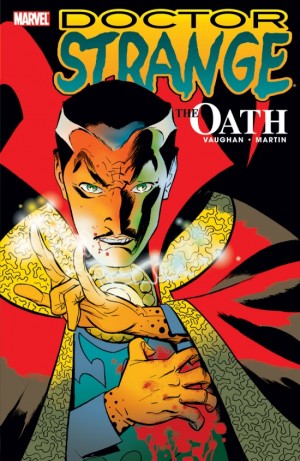Review by Ian Keogh
Triumph and Torment is now most notable for being a major progression for illustrator Mike Mignola. By the late 1980s he was an established comic artist with work under his belt for both Marvel and DC, but one who’d dotted about what were considered lesser projects such as Rocket Raccoon and yet to find a distinctive style. After Triumph and Torment he’d restrict himself to similar one-off projects until creating his own Hellboy series.
It retains a unique look for Mignola, with just glimpses of the style he’d develop, but at times swamped by the pros and cons of Mark Badger’s inking (and colouring). Badger smooths out some rough edges and turns the art away from the significant use of black ink that Mignola would later embrace, but also supplies strangely angular figures on occasion. It’s best appreciated in the original oversize graphic novel release rather than the 2013 reissue, although that could be seen as better value as it also includes peripheral material. Gerry Conway and Gene Colan explain Doom’s predilection for sorcery, two brief Sub-Mariner stories illustrated by Mignola and smack of being his Marvel tryouts, and a very tenuously connected Dr Strange story by Roger Stern is welcome for 22 pages of Kevin Nowlan art.
These, though, are the sideshow. Stern also scripts the main attraction, and he’s in whimsical mode in introducing the somewhat senile Aged Genghis, a capricious analogue to the Ancient One who trained Dr Strange. The Aged Genghis has a sudden bout of clarity and summons the Earth’s magical adepts to a series of tests to determine which of the them is the Sorcerer Supreme. Go on, have a guess.
The opening quarter of the book rather tries the patience. Stern needs Dr Strange and Dr Doom to be united for a task, and the contest is a long-winded manner of ensuring this. That completed we head to the nub of the plot, which is Doom’s long held wish to rescue his mother from Hell, as introduced in the Conway and Colan material. Mignola wakes up here, revelling in his portrayal of Doom’s kingdom, Latveria, his family history, and the subsequent battle in an arcane realm.
Stern goes to great lengths to humanise Doom, to maintain the surety and arrogance, yet give him an aspect we can root for and that may draw him away from the dark side. At times it’s as if we’re reading about Dr Doom the resourceful superhero, fighting for a just cause. Dr Strange’s background is more familiar, yet also aired, and everything moves towards a very well conceived ending. Stern has been toying with the tropes of operatic tragedy, and the conclusion matches the source.
There’s three-quarters of a decent plot, some excellent Mignola pages looking unlike his work elsewhere, and the bonus of Kevin Nowlan in the expanded edition. All in all, it ranks above average.
